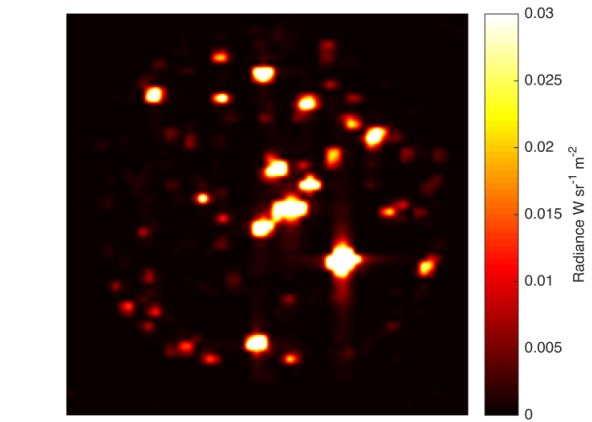
NASA's Juno spacecraft recently spotted a volcanic plume erupting from the surface of Io, one of Jupiter's moon. It should be noted that Io is the most volcanically active of the gas giant's 79 known moons and this discovery came as no surprise for experts. The spectacular sighting was spotted by Juno during its 17th flyby of Jupiter.
A press release issued by the Southwest Research Institute revealed that the 17th close flyby was made on December 21, 2018. Using instruments like the JunoCam, the Stellar Reference Unit (SRU), the Jovian Infrared Auroral Mapper (JIRAM), and the Ultraviolet Imaging Spectrograph (UVS), the spacecraft was trying to learn more about the polar regions of Io. It was at this moment that a volcanic eruption happened on Io's surface.
Researchers revealed that the Juno spacecraft was almost 3,00,000 kilometers away from Io when the volcanic eruption took place.
It was around 20 years back that NASA's Galileo spacecraft initially spotted a volcanic activity on Jupiter's moon Io. However, this is for the first time that Io is spotting a volcanic eruption on Io. It should be also noted that Io is the most volcanically active object in the solar system, and as per experts, there are more than 400 active volcanoes on Io's surface. The surface of Io is almost dipped with hot lava all the time and it adds up to the already harsh conditions in this Jupiter's moon.
"The ground is already in shadow, but the height of the plume allows it to reflect sunlight, much like the way mountaintops or clouds on the Earth continue to be lit after the sun has set," said Candice Hansen-Koharcheck, the JunoCam lead from the Planetary Science Institute in a recently issued statement.
Later, Io became totally immersed in Jupiter's shadow, but the reflected sunlight from the Europa, one of another Jupiter's moon allowed Juno to conduct further observations.
Scientists believe that the new data collected by Juno will unveil the way in which other Jupiter moons impact the volcanic activity of Io.
"Though Jupiter's moons are not JIRAM's primary objectives, every time we pass close enough to one of them, we take advantage of the opportunity for observation. The instrument is sensitive to infrared wavelengths, which are perfect to study the volcanism of Io. This is one of the best images of Io that JIRAM has been able to collect so far," said Alberto Adriani, a researcher at Italy's National Institute of Astrophysics.
The Juno spacecraft orbits Jupiter every 53 days, and during the next cycle, scientists expect more images like these which may reshape the human understanding about the gas giant.









